Let us walk you through exactly how to budget buying green coffee beans from Columbia in 2022.
In Colombia, coffee farmers are in the midst of a remarkably profitable era of coffee production.
Since the value of the Colombian peso against the dollar dropped at the start of the pandemic, coffee beans have increased in price and their value continues to soar to this day.
Recent civil unrest in Colombia caused by anti-government protests has also prompted a record-high spike in coffee prices in mid-2021, despite supply problems due to roadblocks across the country.
Given the peak of the latest coffee harvest season was well under projections, this further pushed coffee prices even further over the threshold.
And the irony is that before the country’s National Coffee Growers Committee (FNC) introduced a stabilization fund in 2019, coffee prices had been notoriously low for years, forcing many smallholder coffee farmers to operate at a loss.
So, if you’ve found yourself Googling “how much are green coffee beans?” stop what you’re doing, and let us walk you through exactly how to budget for buying them from Colombia in 2022.

What is the Price of Green Coffee?
In Colombia, the FNC is in charge of selling the majority of commercial coffee crops, and it sets the price of coffee “per carga.” This term is used to refer to 125kg of parchment, pre-dry mill, presuming the coffee is in perfect condition.
While the per carga green coffee price fluctuates in line with the market, at the time of writing, it currently stands at $2.250.000 Colombian pesos (approximately $570 USD).
To calculate the standard raw coffee price per kg, you can use the FNC per carga price, divide by 125 to get the per kilo parchment price, multiply by the factor (for which you can generally use 92-96), and then divide by 70 to calculate the price per kilo, in green coffee beans.
However, these prices are just for standard coffee if you were a co-op buying directly from producers in towns, not providing any bonuses for the quality of coffee.
For the group two coffees — which score 83 or above according to the Specialty Coffee Association scoring guidelines — you always pay coffee producers a margin of between 10-30% on top of the per carga price. And this is all before any operational costs, transportation, transformation or profits.
For the group three or four high-scoring, specialty coffees, their prices are based on quotes we obtain from producers. Producers calculate these prices by factoring in operational costs, and the costs of research and development (more advanced coffee processes require many experiments to perfect).

What Do Prices Include?
Coffee grower cooperatives cover, at these prices, all costs related to the coffee collection service to producers. These include:
- Production
- Harvesting
- Some transportation to a place of purchase in certain situations.
Other Fees
hese prices do not include the costs of:
- Domestic transportation
- Logistics costs
- Milling
- Packaging
- Quality Control
- Operational expenses
- Banking fees
- Export taxes
- International shipping costs

Domestic Transportation and Logistics Costs
Up until the 1990s — and in some parts of the country to this day — Colombia was famous for its complex road infrastructure and lack of connectivity between isolated regions.
Complex geography including mountains, jungles, and deserts, as well as decades of armed conflict, has also made improving road conditions difficult in Colombia.
For this reason, roads in Colombia are still susceptible to closures due to geographic phenomena such as landslides, as well as blockades during moments of political tension such as social protest.
With such a long list of factors that could delay, complicate, or prevent delivery, domestic transportation of green coffee beans and the logistics costs that come with it in Colombia are often expensive.
In addition to this, other logistics costs including port fees are also surprisingly costly in Colombia. All of these factors must be considered when preparing a budget.

Milling
At the milling stage of coffee bean processing, it’s possible that you could come across some surprise defects in the beans, which means they will have to be removed from the load. And when they’re removed, the total weight of the coffee beans will decrease.
Bear in mind that the per kilo price for coffee has already been counted based on the assumption that the coffee beans were perfect, so a reduction in bean weight could mean additional financial cost. We must prepare for this risk and assume the costs.
Packaging
The cost of packaging green coffee beans is also one not to be overlooked. Packaging green coffee beans in a printed sack with a grain pro bag for extra protection against damage could cost up to approximately $6 per sack, on top of the price of coffee beans themselves.
Although this price can vary depending on the exchange rate and the brand of the bag, it can be a hefty extra cost to assume per kilo of coffee.
For example, if the sack of coffee holds 35kg of beans, these extra costs can amount to an extra $0.17 per kilo of coffee, just on the packaging!

Quality Control
The price of quality control is another added extra that coffee suppliers must assume. For example, here at Those Coffee People, we hire a team of trained experts who spend their time analyzing each lot of coffee to ensure our customers get the exact product they’re expecting.
As any cafe owner will know: employing highly trained and qualified staff is both challenging and expensive to maintain, and you can expect that your suppliers will add this extra cost into their per kilo coffee price.
Banking Fees
When it comes to banking fees, coffee suppliers in Colombia must also factor in the 4/1000 financial transactions tax for sending transactions, which is equivalent to .004% of the price of all transactions.
Don’t be fooled … this tax can end up being very expensive! Think about, for example, paying an invoice worth U.S. $50,000 to your producer, you could end up having to pay $200 in taxes just to send the money.
Another point to remember is that you’ll only be able to claim 50% of this tax as deductible expenses when it comes to paying income taxes. And because of corporate taxes, you’ll have to pay 32% of that 50%, which means even less can be deducted. All of these considerations are factored into the price of coffee.
Export Taxes
In order to export coffee from Colombia, you must register as an exporter with the FNC and obtain an exporting license.
Your Colombian coffee exporter should be able to clearly explain how much you have to pay in export taxes. In 2021, the contribución-cafetera tax charged by the FNC is $0.06 USD per pound of green coffee, or $0.13 per kilo, so a multiple of this amount will be included for each kilo you purchase.
International Shipping Costs
Budgeting for the logistics and coffee transportation costs involved in purchasing coffee beans is incredibly important, as — believe it or not — these additional expenses can sometimes add up to the equivalent of the coffee itself!
According to The International Chamber of Commerce, there are Commercial Terms (Incoterms) for international trade which stipulate that:
- A price for goods that does not include shipping costs can be known as Ex Works (EXW).
- A price for goods that includes only the cost of boarding the goods onto the ship, but not the freight costs, is referred to as Free on Board (FOB).
- When the seller includes transportation costs and brings the goods to a designated place of the buyer’s choosing, this is known as Delivered at Place (DAP).
Shipping Models
At Those Coffee People, we export four different types of coffee shipments. These are:
- Courier: Courier providers include FedEx, DHL, UPS, Deprisa, Servientrega, and TNT. Charges vary depending on which provider you choose but you can expect to pay between $3-8 per kilo of shipping charges on a 50 kilo shipment.
- Air Freight: The fixed costs of exporting via air freight for the majority of our clients are $470. These include documentation, transport from farm to airport, airport fees and customs charges, logistics company handling charges. On top of these, you can expect to pay anywhere between $2-4 USD per kilo in air freight charges.
- Sea Freight: Sea freight is divided up into two categories: less than container load shipments (LCL), and full container load shipments (FCL). For an FCL sea shipment with documentation, transport from farm to port, port charges and fees and customs charges, logistics company handling charges (freight and insurance), you can expect to pay as of early 2022, between $4000-$6000 per container to ship to almost anywhere in the world in the FCL model.
Payment and Invoicing Norms
Colombian coffee exporters usually tend to be paid in U.S. dollars, generally via wire transfer.
Quotes can vary according to the exchange rate of the Colombian peso against the dollar, so this is important to bear in mind when considering quote expiration dates.
If the exchange rate is favorable like it is at the moment, it can pay to complete the purchase quickly while a quote is valid, rather than spending time shopping around.
To sum things up, as you can tell, there are many factors that contribute to the price of green coffee beans when you buy them from origin.
In fact, the actual price of coffee per carga can sometimes be cheaper than the value of all of the extra costs we’ve mentioned. And all of this is before profits are even added!
Being a green coffee supplier means assuming small margins, hard work, and high risk. So next time you buy a bag of specialty coffee, you’ll know that while the price you’re paying might be slightly more expensive, the coffee will be worth every penny!



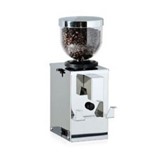
-160x160-state_article-rel-cat.png)
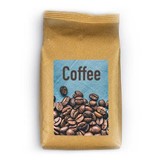

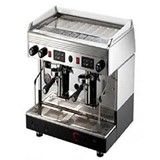
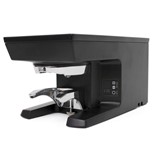


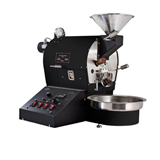






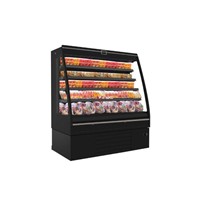





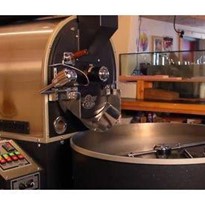

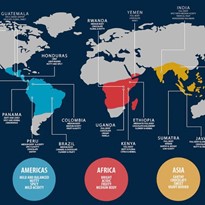


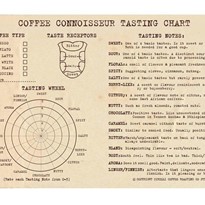



-205x205.jpg)
